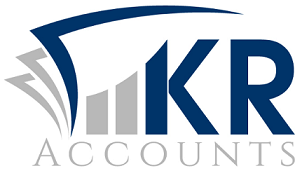Blog
Making data meaningful for your business
Three steps to ensuring data is meaningful for your business
Raw data describes the facts and figures that a business processes every day. Over time, every business hoards a certain amount of data and it only becomes meaningful to a business after it has been processed to add context, relevance and purpose.
For example, in a restaurant, every order will be recorded. However, a restaurant won’t learn much by looking at each one in isolation. Analysis of the orders will reveal trends and patterns, such as peak dining days or biggest-selling menu or bar items. Knowledge of the business comes from the relationship between the singular pieces of information. That restaurant owner may know to do their biggest stock order on a Wednesday by analysing their covers and establishing that sales increase by 38% on Thursdays.
The pace of business in today’s technological times requires businesses to be able to react quickly to changing demands from customers and environmental conditions. The ability to be able to compile, analyse and act on data is increasingly important. In some instances, a high volume of data may need to be accumulated and analysed before trends and patterns emerge, like a particular season’s most popular dish.
When you aren’t compiling accurate business data, you can only rely on gut feel and assumptions about past performance to inform your future business decisions.
If your business is already using cloud software for accountancy, project management system or CRM, it’s likely that you’re sitting on a goldmine of data. If properly utilised, this data can greatly aid running a successful business. You’ll have valuable insight into your sales, expenses, profit and staff efficiencies that can help you answer critical questions and drive smart business decisions.
Every business is unique, but here are three quick tips to help you drive data in your business.
1. Data is only powerful if there is context – can you stop to answer these questions?
- What is your primary objective (business or personal)?
- What is happening in the business?
- What isn’t happening?
- How can you influence what happens?
Figure out what you’re currently trying to achieve before anything else. It’s important to periodically go back and ask yourself these questions and what goals develop from the answers, as answers evolve over time. You may have started out with your primary objective as running the best restaurant in your area. However as time has passed, your primary objective might now be to take time away from the business to spend more time with your children.
2. The only way your data can help you drive your business is if it’s accurate and organised appropriately – ask yourself:
- Are your financials up-to-date?
- Do you have any unreconciled transactions?
- Are you tax compliant?
- Are your staff trained on what systems and processes to use for different parts of your business?
- Are your cloud systems being correctly utilised?
The worst thing you can do is to attempt to analyse incorrect data and attempt to make decisions for the business based on it! Tools like Spotlight Reporting can help you with the reports you need for business decisions.
3. Understand what the data necessities are and what the niceties are.
- What would you most like to understand about your business?
- What figures pinpoint success for you?
- What are your objectives over the next six to twelve months, and two to five years?
Remember, to focus on what truly matters and build from there. If you want help with the process, we can accumulate, analyse, report and advise on your data; or show you the tools to use.

